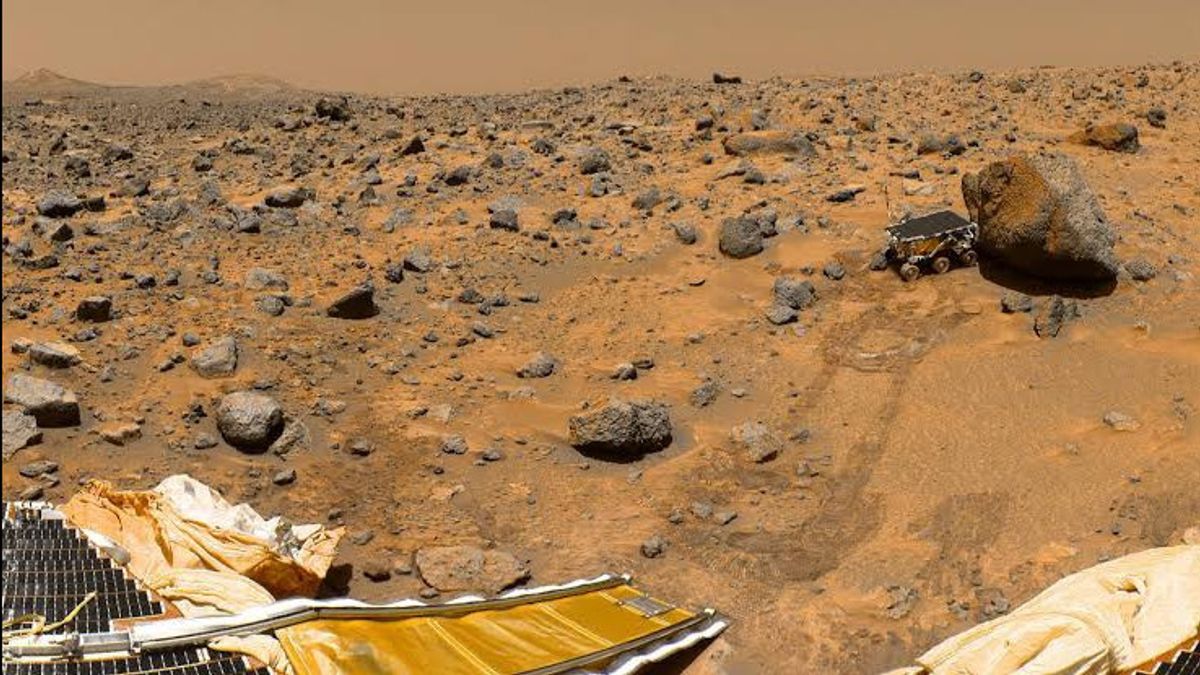JAKARTA - Planet Mars is indeed claimed to have life like on Earth, but that does not mean it is without risks that could endanger astronauts when exploring the planet in the future.
A recent study has shown that digging deep into the Martian surface could provide protection from harmful radiation and potentially provide building materials for astronauts.
However, before astronauts venture to the Red Planet or beyond Earth's atmosphere, scientists must first examine the threat. Including, the amount of cosmic radiation that rained down on Mars, in particular galactic cosmic ray particles (GCR).
According to the US National Oceanic and Atmospheric Administration, GCRs are high-energy particles, consisting essentially of every element present. They come from outside the Solar System.
GCRs are likely emitted from explosive cosmic events, such as supernovae and mostly reflect off the magnetic field that surrounds Earth, called the magnetosphere.
Extensive exposure to GCR particles can cause humans to experience many health problems, such as cancer, cataracts, and damage to the central nervous system.
Mars itself lacks the similar protective global magnetic field that allows GCR particles to freely enter its atmosphere and reach the planet's surface. In the absence of a magnetosphere, the Martian atmosphere is the only line of defense against the GCR.
The defense is also quite thin, because on average the air on the Red Planet is only 1 percent as dense as Earth at sea level. When GCRs enter the Martian atmosphere, which is mostly carbon dioxide and nitrogen they lose a lot of energy through ionization, which can prevent them from reaching the surface.
It can largely depend on the thickness of the atmosphere and furthermore, the amount of atmospheric pressure applied to the surface.
The scientists also discovered that the interaction between the GCR and the atmosphere also creates another type of harmful radiation called secondary neutron particles. They found that more atmospheric shielding resulted in an increased contribution of secondary neutrons to the surface.
Using state-of-the-art computer modeling called the Atmospheric Radiation Interaction Simulator (AtRIS) and radiation data collected by NASA's Curiosity rover, scientists were able to simulate GCR exposure on the planet's surface and measure how deeply it penetrates into the ground and rock surfaces (known as regolith).
Launching Space, Thursday, April 28, the results of their analysis revealed that the effective radiation dose peaked about 12 inches (30 centimeters) into the regolith.
Beyond that, the scientists propose that for safe habitation on Mars, defined as an annual radiation exposure of no more than 100 millisieverts), a regolith shield of between 3.3 to 5.5 feet (1 to 1.6 meters) would be required.
"In deep craters where surface pressure is higher, the extra regolith shielding required is slightly less," the scientists said.
Understanding how Martian material is affected by the GCR and the role the Martian atmosphere plays in changing radiation exposure is a step forward in developing a potential base on Mars. The new study was published last February in the Journal of Geophysical Research: Planets.
"Our study may serve to reduce radiation risk when designing future Martian habitats using natural surface materials as protective shields," the scientists said.
The English, Chinese, Japanese, Arabic, and French versions are automatically generated by the AI. So there may still be inaccuracies in translating, please always see Indonesian as our main language. (system supported by DigitalSiber.id)













